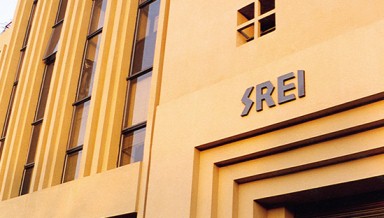Devendra Kumar Vyas, CEO , Srei Equipment Finance.
The fiscal budget for FY18 has been appreciated for many ‘firsts’. This was the first budget to come out on 1st February; the first to amalgamate the railway budget into the union budget; the first budget to do away with planned and unplanned expenditure; and probably the first to touch on many issues which weren’t earlier discussed in such detail as this one. A lot was expected from the first budget post-demonitization. Expectations were on refueling the economic growth, tax-cuts, increased spending on infrastructure, etc. Uncertainties of the note ban’s effects on the GDP growth were an added pressure. The government has prudently maintained a balance between revenue and expenditure. It has continued on the path of structural reforms and focus has been on increasing the revenue through proper tax compliance rather than increasing the burden on the honest tax payer.
Rural India has been the biggest beneficiary in this budget. With an eye to boost the agricultural economy and rural infrastructure, the budget seeks to increase credit availability to the farm sector to Rs. 10 Lakh crores. The budget provides for irrigation, soil testing, crop-insurance, and selling and distribution of produce. Commendably, the government has set ambitious targets to double the farmer’s income in the next five years. Post de-monitization, non-farm budgetary support for the rural sector has also picked up. There is a continuous push for rural roads construction. Out of total spending on rural development, 15% is earmarked for construction of roads. Allocation for rural housing saw an increase of 44%. The budget has balanced both farm and non-farm development schemes for rural in a prudent manner.
The gross capital formation has been on the decline in the past few years. To arrest this decline, it was necessary to increase public expenditure in capital formation. The total spending on infrastructure increased by almost 10%; with the total budget outlay for infrastructure sector being Rs. 3.96 lakh crores. In the infrastructure sector the outlay for the transport sector (compromising of roads, railways and shipping, etc) is about Rs 2.4 Lakh crores. Merging of the Rail Budget with the Union Budget provides an opportunity to plan optimal utilization of resources. Increase in allocation for railways from Rs. 1.21 Lakh crores in the FY17 budget to Rs. 1.31 Lakh crore in FY18 budget may seem nominal at first sight, but owing to improved efficiencies the utilization is expected to be better. For roads and highways, the government has allocated Rs. 64,900 Crores and Pradhan Mantri Gram Sadak Yojana (PMGSY) has been allocated Rs. 27,000 crores (including states’ share). Urban India benefits from 80% increase in allocation towards metro rail. Strategic importance of other smaller announcements like construction and development of 2000 kms of coastal roads cannot be undermined as it will create opportunities of trade and commerce for many different sectors. The benefits of developing multi-modal logistics parks and multi-modal transport facilities will also cascade to improve port connectivity and logistics. We believe that the enhanced outlay in infra would further benefit the growing off-take in the construction and earth moving equipment segment.
Affordable Housing, accorded infrastructure status in this budget, is one of the major beneficiaries. The affordable housing projects can now avail the benefits that the infrastructure sector enjoys, i.e. increased sources of funds, tax benefits, faster dispute resolution mechanisms etc. With allocation of Rs. 29,043 crores under Pradhan Mantri Awas Yojna (PMAY), a jump of 39% from the previous year, the government has proved that it is going strong in its mission of ‘Housing for All’. These initiatives should encourage more developers to foray into affordable housing. Also, move to reduce the holding period for computing long term capital gains from transfer of immovable property from 3 to 2 years will provide relief to buyers. Increased housing, sanitation and other construction activities will augment well for construction materials and equipment manufacturers too.
This budget has several large positives that will accelerate the growth of the country. However, we would have been even more satisfied if a few points specific to the NBFC and equipment finance sector were addressed. In the recent past we have seen a lot of promising reforms in debt restructuring, insolvency etc. However, a roadmap to resolve the asset quality stress for the financiers would have been desirable. Overall, we believe this budget provides a fresh shot in the arm to the economy and the industry is positioned for a quantum jump from here.







